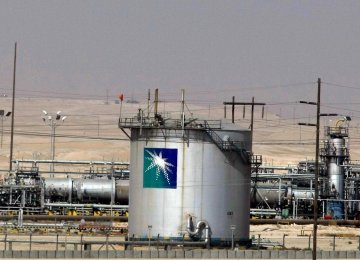The impending initial public offering of shares in Saudi Aramco, the world’s biggest oil producer by volume, will be a bellwether for investors’ belief in humanity’s readiness to curb the carbon emissions set to disrupt centuries of stable climate.
If investors believe those pledges will be kept, Aramco could be worth barely half what some market experts are projecting.
Moreover, “if oil prices stay at $50 in real terms, Aramco’s value could be reduced to less than $700 billion”, 55% below current estimates among most analysts, Oil Change International states in a release, The Energy Mix reported.
Most market analysts expect Aramco’s IPO to be valued at $1 billion to $1.5 trillion when it is issued later this year, Oil Change notes in a new white paper. That is rather lower than Saudi Crown Prince Muhammad bin Salman’s very bullish $2-trillion estimate, but still a handsome haul.
However, even the more realistic conventional wisdom on Wall Street ignores both policy and economic pressures toward decarbonizing the world economy, the research and advocacy organization points out. Both bear on how much of Aramco’s vast, cheap-to-produce crude reserves the company will eventually get to pump—with implications for potential investors as well as the progression of climate change.
Basing its calculations on International Energy Agency data, Oil Change estimates that if the global carbon budget is limited to what can be burned within the “minimum ambition” of the Paris accord—keeping average temperatures within 2?C of their pre-industrial average—Aramco’s value drops by between $375 billion and $600 billion from the higher end of pre-IPO estimates.
“The IPO is thus a real test of whether investors are thinking seriously about climate change,” the US-based research and advocacy group said.
If the issue reaches the high end of Oil Change’s valuations, above $1 trillion, it “would indicate [that investors] are betting on a failure to address climate change, through an expectation of high future oil demand”.
If those expectations are wrong and humanity does get a grip on its carbon addiction, “investments in the IPO could then be at significant risk”.
On the other hand, if investors value Aramco at the lower end of its range in a carbon-constrained world—say, below $1 trillion—it may soften the floor beneath the share prices of other big, international investor-owned oil companies, the analysis concludes.
A higher Aramco IPO valuation would also suggest that investors believe all or most Saudi oil will eventually be produced. That could prove decisive for the climate.
--- Emissions
“Emissions from Saudi reserves would amount to one-seventh of total global emissions [allowable] in a 2°C carbon budget, or one-third of total global emissions in a 1.5°C carbon budget,” Oil Change observes.
It is unlikely that other international oil companies, or nations, would cede that much of the global carbon budget to a country with just 0.0044% of the world’s people.
Further darkening the outlook for the state oil producer’s debut on world markets, Bloomberg reports that OPEC, which Saudi Arabia leads, is at “panic stations” over other IEA data.
The international agency’s latest market conditions report “has found another 230 million barrels of oil in storage that will need to be drained before balance is restored” to the market, a precondition for stronger prices, Bloomberg reported.
“That is a lot of oil. To put it in perspective, it increases the [estimated] buildup in inventories since the beginning of 2014 by almost 25%. An output cut of 1 million barrels a day would take another six months to drain it.”
The main factor behind the statistical “discovery” of so much oil is a downward correction in oil consumed in non-OECD countries from estimates made in advance. China alone accounted for a quarter of the drop.
“The IEA’s revisions cut by 800,000 barrels a day the amount of oil the world may need from [OPEC] in the current quarter,” Bloomberg notes. As a result, the international agency “expects global stockpiles to rise this quarter—not fall”.
Meanwhile, supply-side issues persist. According to a separate Bloomberg report citing data from the US Energy Information Administration, rising American shale oil output is expected to add a record 2.6 million barrels per day of additional crude to world inventories through September, ensuring that stockpiles remain high and prices low.











Add new comment
Read our comment policy before posting your viewpoints